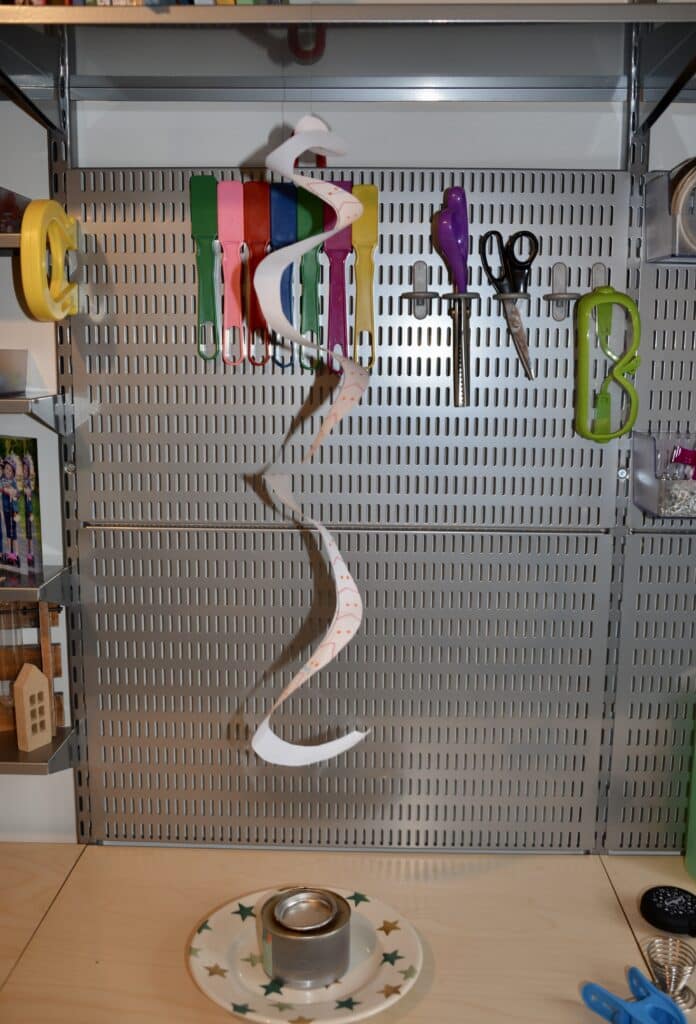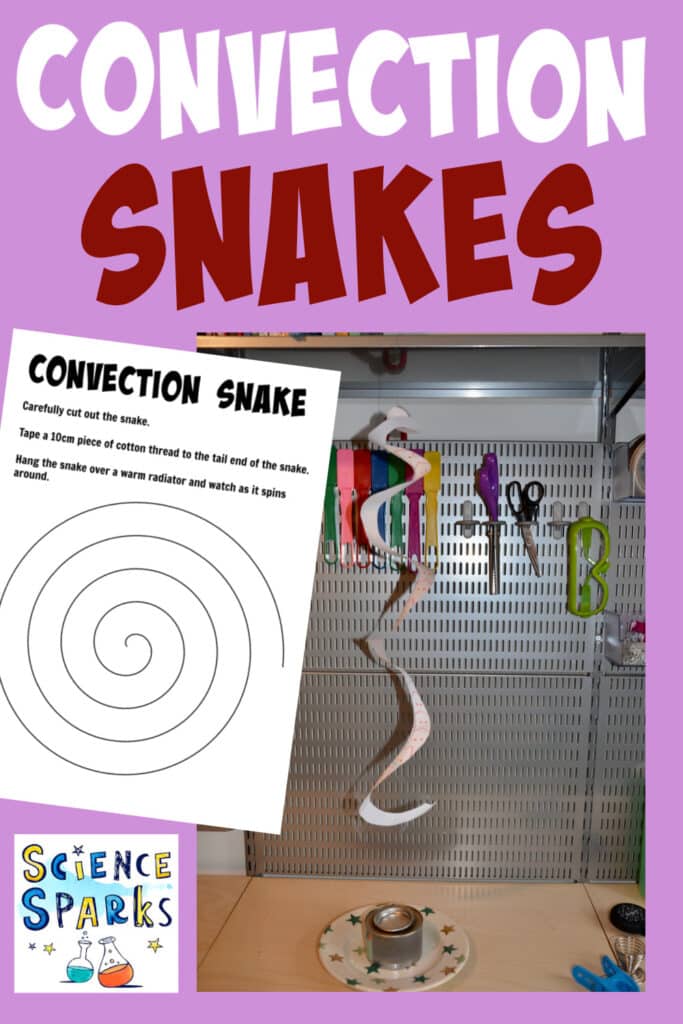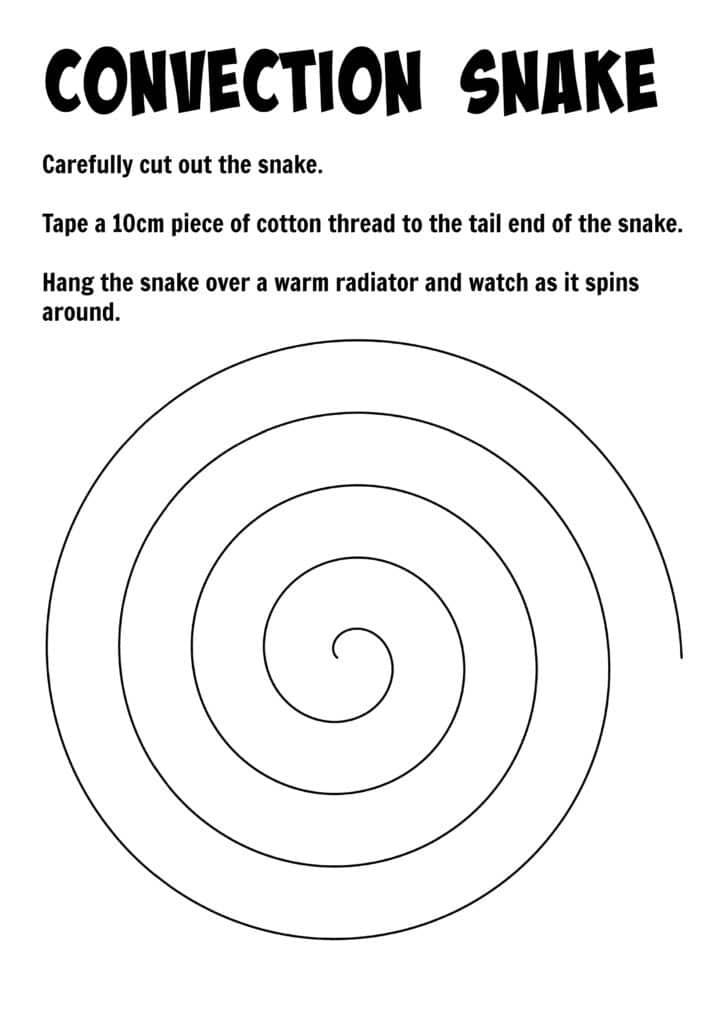This is a lovely activity to demonstrate convection. Younger children will love it just for the moving snake, and it’s a great way for older children to start to understand what convection means.
This activity requires a source of heat, so adult supervision is essential.
You will need
Paper snake
Cotton thread
Tape
Scissors
Colouring pencils
A heat source
How to make a spinning snake
1. Draw a snake on a sheet of paper in a spiral shape or use the convection snake template.
2. Colour and decorate as you wish.
3. Cut out the snake so that it makes a spiral.
4. Tape the cotton to the centre end of the snake.
6. Hold the snake over a heat source such as a candle or radiator.
The snake spiral should start to spin.

Why does this work?
Convection is the transfer of heat in a fluid. A fluid is usually a liquid or a gas!
In the case of the snake, moving air particles make the snake spin. As the air near the heat source warms, the particles move further apart. This makes the air less dense, and so it rises and is replaced by cooler, more dense air. As the air particles rise, they cool again and become denser, which makes them sink, and the cycle continues. This circular movement of air particles rising and falling causes the snake to spin. This is a convection current.
This process is how radiators work to heat our homes. The hot water inside the radiator heats the radiator through the process of conduction. Then the hot radiator heats the air around it, which spreads into the room as it becomes less dense. This is replaced by cooler dense air, which is then heated!

Last Updated on April 29, 2024 by Emma Vanstone


Wow! What a fun experiment!!! Love it! I remember those funny curly whirly things you would place on your palm, but these snakes are much better and show the effect of heat more! Love it!
Thanks for sharing on Kids Get Crafty!
Maggy
Thanks Maggy. We love Kids Get Crafty! xx
Great experiment! I remember making these at school!
Thanks for linking up to Handmade Thursday! My Son will LOVE your site 🙂
I hope he does. Let us know if you try any experiments out. x
oh, I love finding fun science experiments so I am SUPER excited to have found you!!
would love to invite you to link this up to the Sunday Showcase – http://momto2poshlildivas.blogspot.com/search/label/Sunday%20Showcase
Bern
great project! and thanks for giving me a refresher course on what exactly convection is! (a little sad given that I have a BS in physiology)
Thanks so much for sharing on Craft Schooling Sunday, great to have you!
That’s pretty cool. I’ve seen this snake for wind, but it’s fun to see it used for something else.